6 livestock apps to improve business performance
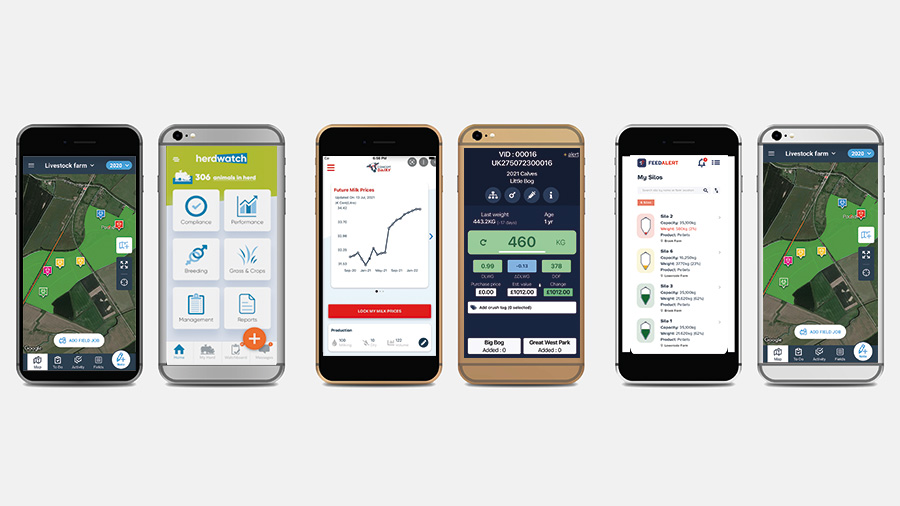 Mobile phone frames © Just me
Mobile phone frames © Just me A growing number of smartphone apps are helping livestock farmers improve their business performance – making mundane jobs easier and saving both time and money.
Producers are able to keep on top of their game with apps that ease pressure on farm staff, collect data more easily and increase the efficiency of their enterprises – ultimately making them more productive.
Here are six apps to consider.
See also: 12 must-have phone apps for cattle farmers
Breedr Cashflow
The Breedr app is a data recording tool that links to weigh cells and other information-gathering devices such as tag readers. It can also download to farm office equipment and connect to livestock recording services.
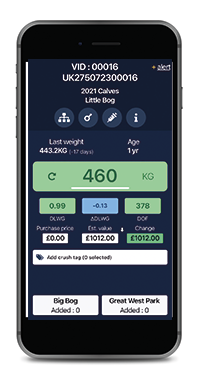
These features are key to saving labour and administration time. But, in a further development, Breedr has set up an online buying and selling system backed by a £10m cashflow funding package.
Beef and sheep farms have money tied up in their animals for months between breeding and finishing periods.
Because there is little or no cashflow between the two points, farmers are often forced to rely on savings, overdraft facilities or loans using a farm’s fixed assets as security.
This annual financial cycle carries a huge risk to the farm itself.
How it works
Instead of borrowing against the farm, Breedr Cashflow allows businesses to draw down cash secured against the value of the farm’s livestock, rather than fixed assets.
The lending confidence is founded on the robustness of the data submitted by app users through continual monitoring and recording of each animal. That has been deemed sufficient for financiers to lend against the growing stock as collateral.
Breedr Cashflow will provide cash up to 80% of the value of cattle or sheep – either those which a farmer plans to purchase or already has on the farm, smoothing out troughs in cashflow.
For details, visit: www.breedr.co
Concept Dairy
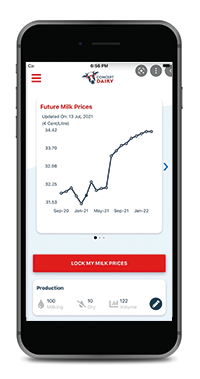
Concept Dairy is an app-based milk price monitor that allows farmers to lock into contracts on future values.
The aim of the tool is to increase transparency across the market and reduce price volatility for farmers.
Processors also gain through having a greater degree of certainty in their long-term supply.
How it works
Farm managers upload the herd’s production levels and milk quality details into the app, which then displays milk futures prices in real-time on a calendar up to 24 months in advance.
The farmer views the basic forward prices offered by the processor, selects the month and submits the number of litres to sell, along with fat and protein levels.
Once the processor has reviewed and accepted the proposed amounts and constituents, the details are displayed in green and the contract is locked in.
Prices are live and update daily. The business benefits through knowing that the contract price is guaranteed and has a greater degree of certainty.
Spot prices are relatively high at the moment and although the projected value for June 2024, of 51.698p/litre, is lower than today’s highs, it is still well above the five-year average.
By June 2024, the spot price may well have fallen back to a more typical number and the fixed price will be a bonus.
The app has additional features that provide further security for the farm business. For a small fee – for example, in the current market the fee is 2.69p/litre – the deal can be protected and will track upward price moves.
That means if the spot price has risen above the projected level, as has been the case in the past 18 months, the business will not miss out.
More features are under development that will allow farmers to buy forward inputs such as fuel, feed and fertiliser at fixed prices.
With both input and output prices locked in to provide a known margin, the farm business will be far less exposed to volatility.
For details, visit: conceptdairy.com
Herdwatch
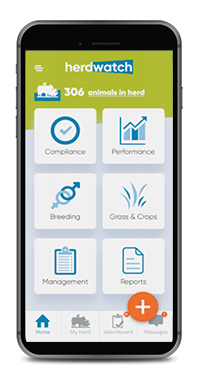
Like Breedr, Herdwatch is one of a number of recording apps, but it is among the best-known examples across all livestock types with a broad range of features.
The app supports business resilience by cutting labour and administration times while helping to avoid cross-compliance penalties and misuse of medicines. Other compliance issues such as inspections are also supported.
The App is compatible with the British Cattle Movement Service (BCMS), Northern Ireland’s Animal and Public Health Information System (Aphis) and Red Tractor.
How it works
Data recorded can be directly uploaded to BCMS and Aphis and inspection reports are created in a compatible format.
Offline recording allows data to be stored on the phone so features can be used without available wi-fi. For example, medicines can be logged at purchase, preventing any mistakes or omissions that might occur if the details are written down and recorded later.
The app uses a smart barcode reader to identify the medicine, and a QR code scanner to automatically input the batch number and expiry date.
It will alert the user to any expiry dates as they approach, and will keep track of quantities used and re-order dates.
Animals can be registered offline at the time of tagging, and then uploaded directly to BCMS and Aphis when in wi-fi range.
Weight recording is logged against the tag and the app will calculate daily liveweight gains based on subsequent weighings.
For details, visit: herdwatch.co.uk
Hoofcount Footbath

Labour-saving devices can cut costs, improve work regimes and allow more time to concentrate on managing herd performance.
Most farms employ foot-baths as a prevention measure for lameness which can affect performance and ratchet up costs through treatment and management time.
Even a small unit could have a 260-litre bath which requires filling and emptying twice a day. This can take up to an hour to drain, clean and refill the bath for a 100-cow herd each day.
But one equipment manufacturer, Hoofcount, offers labour-saving, app-linked automatic foot-baths.
How it works
Once installed and programmed, the foot-bath can be left to carry out the routine task. It monitors stock throughput via a counter and automatically drains, cleans and refreshes the bath according to the number of animals that have used it.
Alternatively, operations can be set to go ahead at certain times of the day, or manually at any point via a start switch on the app.
The bath drains rapidly before a jet-washing programme starts. Chemicals are dispensed at pre-set concentrations without any human intervention. This cuts staff exposure to chemicals and saves further time in putting on and taking off protective equipment each day.
The app connects to any number of baths, displaying chemical concentrations and alerting if dispensers are running low.
The app will also display numbers passing through, and confirm that operations are under way, removing the need for physical checks.
For details, visit: hoofcount.com
FeedAlert
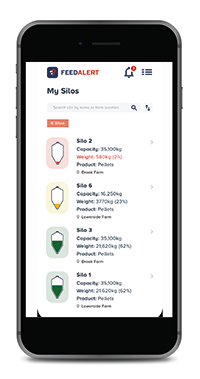
Feed Alert is an app-linked monitoring system that can streamline feed re-ordering and cut waste.
Ordering according to the calendar can cause excess stocks to mount up in bins, increasing the likelihood of feed degradation and nutrient loss. Stale feed will see lower intakes, resulting in a drop-off in performance and wasted feed.
Alternatively, livestock farms risk running out of feed if they do not have an accurate method of assessing stocks.
Buying stocks at critical low points mean the herd manager is more likely to be forced to accept a higher price.
How it works
FeedAlert is based on accurate weight monitoring of silo systems. Equipment from strain gauges to load cells can be supplied at purchase of a new silo, or retrofitted to any make of bin.
Accuracies of up to 99.8% are possible depending on the number of load cells attached to the silo legs.
Measuring with this level of accuracy overcomes any potential discrepancy caused by bridging. Data can be viewed at the silo or remotely using the FeedAlert app.
The app will alert the user to falling feed levels to avoid outages, provides seven-day forecasting to tighten delivery periods, and displays a 30-day history and daily usage summaries.
It can also be shared across the workforce to further reduce risks of outages.
For details, visit: feedalert.co.uk
FieldMargin
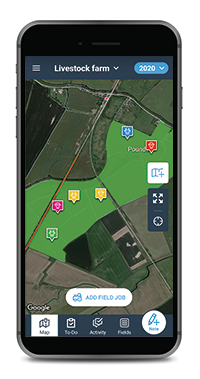
A whole-farm mapping, monitoring and recording app, FieldMargin is not limited to livestock production. Users can record inputs such as seed, spray and fertiliser, plan jobs and record when they’ve been completed.
As well as logging inputs and fieldwork, the app can provide a detailed map with additional features logged, such as fences, gateways, buildings, drains and water pipes to help workers navigate and avoid hazards.
Animal locations and movements can also be logged to make keeping on top of grazing days a simpler task. It can make it easier to monitor different herds around the farm, track animal numbers, calculate grazing days and pasture rest days.
How it works
FieldMargin says herd movements can be recorded with only a few taps, making it easy to keep up-to-date records. Livestock can be moved simply by selecting their new location on the map, with each herd having its own history and grazing records.
The app also automatically calculates field rest days to help estimate grazing availability. Users can see a history of when fields were previously grazed and for how long, and easily check current grazing.
A herd history facility shows when the herd was moved into a field and when they were removed to go somewhere else. On the removal date it will show how many days the animals had been grazing in that field.
For details, visit: fieldmargin.com
Case study: Transition Farmer Eddie Andrew
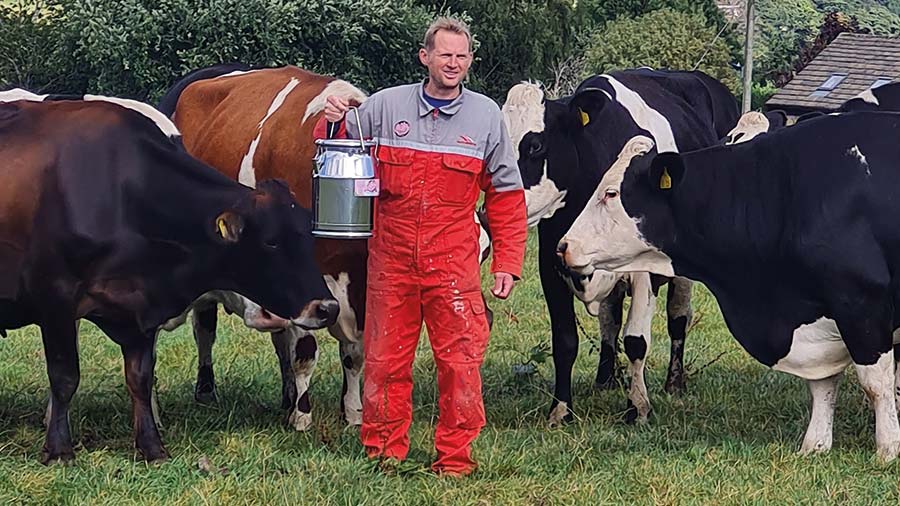
Eddie Andrew © Our Cow Molly
Transition Farmer Eddie Andrew’s family-run farm produces milk and ice cream from his 90-cow dairy herd on the edge of the Peak District National Park.
The business, Our Cow Molly, has an ice cream parlour, a shop and a milk delivery service to about 1,200 local customers around Sheffield, just four miles away.
With so many enterprises, app-based technology plays a key role in monitoring equipment.
Sensors on freezers are linked to staff smartphones, providing real-time information on temperature changes.
The farm enterprise also uses FieldMargin (see above) to save time and achieve more accurate fertiliser use.
“With fertiliser prices so high, we wanted to tighten up on usage and make sure were matching the crop needs,” Mr Andrew explains.
Shared with the farm contractor, the app allows all fieldwork to be logged and recorded.
Details are shared with other staff members so all information on inputs is available at all times – saving time on administration and eliminating confusion.
“It means there is no wasted time or possible errors in explaining which fields need what fertiliser,” Mr Andrew says.
“The saved information acts as a record for later so we know exactly what’s been done and when.”
